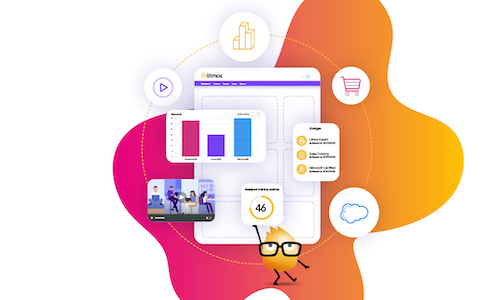How Training Impacts the Bottom Line

There are, however, two areas where L&D has a direct impact on an organization’s revenue: sales enablement and customer experience.
How does sales enablement benefit sales?
Sales enablement is the process of providing your reps with everything they need to make a sale, including tools, coaching, and information. You may wonder how enablement differs from sales training. The difference is that enablement is an umbrella term, covering all resources. Training falls under that umbrella.
Sales Hacker goes further than this when differentiating training and enablement. Sales Hacker defines training as the initial onboarding training a sales rep receives, as well as compliance and product training. Enablement is defined as ongoing enrichment and support that helps a salesperson do their job as long as they work for a sales organization. It’s also very individualized: enablement should align with the company’s goals and the salesperson’s needs.
This sort of coaching takes into account how a rep is performing already, and allows L&D to fine-tune the sales team’s approach so that all reps are able to close deals more effectively. With sales enablement so directly related to revenue generation, it’s not surprising that 97% of sellers rate sales enablement as an important tool in 2022.
Training and customer experience
A customer’s experience with your organization is rapidly becoming one of the most important factors when it comes to keeping old clients and gaining new ones. Consumers increasingly seek out companies that put significant time and effort into their relationships with customers. They want to be heard, helped, and treated with care by your representatives, and that can be a lot of work for your reps.
According to a 2022 survey by Five9, 52% of companies say their representatives must provide customer support across a variety of interaction channels, and 43% say their agents’ interactions with customers have become longer and more complex.
Given that emotional intelligence during those longer interactions, as well as being able to meet customer expectations on several levels is a major part of the job, sales reps absolutely need support from L&D when it comes to best practices in customer experience.
It’s not just that excellent service leads to higher gains — Bain & Company found that raising customer retention by just 5% can boost the bottom line by 25-29% — It’s also that the reverse is true. Unhappy customers can be responsible for damaging word of mouth. While only 1 in 26 customers complain to the company, 13% of unhappy customers will complain to others in person and online, having an adverse impact on sales.
L&D and your revenue
Learning is never a bad thing; your L&D department is constantly making contributions to your organization that promote growth and help your team reach their revenue goals. When it comes to having a direct effect on sales, however, sales enablement and customer experience are both areas where you can point to exactly the way your learning initiatives have led to growth.




